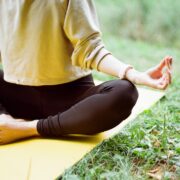
Mindful Movement: Relieve Stress with These Practices
Mindful movement refers to the practice of engaging in physical activities with full awareness and presence in the present moment. It involves paying attention to the sensations, movements, and breath while engaging in various forms of exercise or movement. This practice combines the benefits of physical activity with the mindfulness techniques that help reduce stress and promote overall well-being.
The benefits of mindful movement are numerous. Not only does it help improve physical fitness and flexibility, but it also enhances mental clarity, reduces stress levels, and promotes emotional well-being. By bringing attention to the body and breath during movement, individuals can cultivate a sense of calm and relaxation, leading to a more balanced and centered state of being.
Key Takeaways
- Mindful movement can improve physical and mental health
- Movement can help reduce stress and anxiety
- Yoga, tai chi, qigong, walking meditation, and stretching are all forms of mindful movement
- Mindfulness can be incorporated into any workout routine
- Mindful movement can prevent burnout and improve mental health
Connection between Movement and Stress Relief
Engaging in physical activity has long been known to have a positive impact on stress levels. When we move our bodies, endorphins are released, which are natural mood boosters that help reduce stress and anxiety. Additionally, physical activity helps to increase blood flow to the brain, improving cognitive function and reducing feelings of overwhelm.
The science behind the connection between movement and stress relief lies in the release of neurotransmitters such as dopamine and serotonin. These chemicals are responsible for regulating mood and promoting feelings of happiness and well-being. When we engage in mindful movement, we activate these neurotransmitters, leading to a reduction in stress levels and an overall improvement in mental health.
Yoga as a Form of Mindful Movement
Yoga is a popular form of mindful movement that combines physical postures, breathwork, and meditation. It originated in ancient India and has been practiced for thousands of years as a means of promoting physical health, mental clarity, and spiritual growth.
The benefits of yoga for stress relief are well-documented. The practice helps to calm the nervous system, reduce muscle tension, and promote relaxation. By focusing on the breath and being fully present in each pose, individuals can cultivate a sense of mindfulness and inner peace. Regular yoga practice has also been shown to improve sleep quality, reduce anxiety and depression, and enhance overall well-being.
To practice yoga mindfully, it is important to listen to your body and honor its limitations. Avoid pushing yourself too hard or forcing yourself into poses that feel uncomfortable. Instead, focus on finding a balance between effort and ease, and allow yourself to be fully present in each moment of the practice.
Tai Chi and Qigong for Relaxation and Stress Reduction
| Metrics | Tai Chi | Qigong |
|---|---|---|
| Relaxation | ✔️ | ✔️ |
| Stress Reduction | ✔️ | ✔️ |
| Improved Balance | ✔️ | ❌ |
| Increased Flexibility | ✔️ | ✔️ |
| Lower Blood Pressure | ✔️ | ✔️ |
Tai Chi and Qigong are ancient Chinese practices that involve slow, flowing movements, deep breathing, and meditation. These practices are often referred to as “moving meditations” because they combine physical movement with mental focus and awareness.
The benefits of tai chi and qigong for stress relief are similar to those of yoga. The slow, deliberate movements help to calm the mind, reduce muscle tension, and promote relaxation. These practices also improve balance, flexibility, and coordination, making them suitable for individuals of all ages and fitness levels.
To practice tai chi and qigong mindfully, it is important to focus on the sensations in the body as you move through each posture. Pay attention to your breath, allowing it to guide your movements. Be fully present in each moment, letting go of any distractions or thoughts that arise.
The Benefits of Walking Meditation
Walking meditation is a form of mindful movement that involves walking slowly and deliberately while paying attention to the sensations in the body and the environment around you. It can be practiced indoors or outdoors and is a great way to incorporate mindfulness into your daily life.
The benefits of walking meditation for stress relief are similar to those of other forms of mindful movement. It helps to calm the mind, reduce stress levels, and promote a sense of relaxation. Walking meditation also improves focus and concentration, making it an excellent practice for individuals who struggle with racing thoughts or a busy mind.
To practice walking meditation mindfully, start by finding a quiet and peaceful place to walk. Begin by taking a few deep breaths and bringing your attention to the sensations in your feet as they make contact with the ground. Slowly begin to walk, paying attention to each step and the movement of your body. If your mind starts to wander, gently bring your attention back to the present moment and continue walking with awareness.
Mindful Stretching and Its Impact on Stress Levels
Mindful stretching involves engaging in stretching exercises with full awareness and presence in the present moment. It can be done as a standalone practice or incorporated into other forms of mindful movement such as yoga or tai chi.
The benefits of mindful stretching for stress relief are similar to those of other forms of mindful movement. It helps to release muscle tension, improve flexibility, and promote relaxation. Mindful stretching also allows individuals to connect with their bodies and cultivate a sense of mindfulness and presence.
To practice mindful stretching, start by finding a comfortable position and taking a few deep breaths. As you stretch, pay attention to the sensations in your body and any areas of tension or tightness. Move slowly and mindfully, allowing yourself to fully experience each stretch. If you feel any pain or discomfort, ease off or modify the stretch as needed.
Incorporating Mindfulness into Your Workout Routine
Incorporating mindfulness into your workout routine involves bringing awareness and presence to each movement and exercise. It means being fully engaged in the present moment and paying attention to the sensations in your body, breath, and surroundings.
The benefits of incorporating mindfulness into workouts are numerous. It helps to improve focus and concentration, reduce stress levels, and enhance overall performance. By being fully present in each movement, individuals can also reduce the risk of injury and improve body awareness.
To incorporate mindfulness into your workout routine, start by setting an intention for your practice. Before each exercise, take a moment to check in with your body and breath. As you move through each movement, pay attention to the sensations in your muscles, the rhythm of your breath, and the quality of your movement. If your mind starts to wander, gently bring your attention back to the present moment and continue with awareness.
Mindful Breathing Techniques to Enhance Your Movement Practice
Mindful breathing techniques involve bringing awareness and presence to the breath while engaging in movement or exercise. By focusing on the breath, individuals can cultivate a sense of calm and relaxation, reducing stress levels and promoting overall well-being.
The benefits of mindful breathing for stress relief are well-documented. Deep breathing activates the parasympathetic nervous system, which is responsible for promoting relaxation and reducing stress. By taking slow, deep breaths, individuals can slow down their heart rate, lower blood pressure, and reduce feelings of anxiety or overwhelm.
To practice mindful breathing, start by finding a comfortable position and taking a few deep breaths. As you engage in movement or exercise, focus on the sensation of the breath entering and leaving your body. Pay attention to the rhythm and quality of your breath, allowing it to guide your movements. If your mind starts to wander, gently bring your attention back to the breath and continue with awareness.
The Role of Mindfulness in Preventing Burnout and Improving Mental Health
Burnout refers to a state of chronic physical and emotional exhaustion that is often caused by prolonged periods of stress or overwhelm. It can have a significant impact on mental health and overall well-being. Mindfulness has been shown to be an effective tool for preventing burnout and improving mental health.
The benefits of mindfulness for preventing burnout and improving mental health are numerous. By cultivating a sense of presence and awareness, individuals can better manage stress levels, reduce feelings of overwhelm, and improve emotional well-being. Mindfulness also helps to improve self-awareness and self-compassion, allowing individuals to recognize and address their own needs and limitations.
To practice mindfulness for burnout prevention and mental health, it is important to prioritize self-care and make time for activities that promote relaxation and well-being. Engaging in mindful movement practices such as yoga, tai chi, or walking meditation can be particularly beneficial. Additionally, incorporating mindfulness into daily activities such as eating, showering, or commuting can help to reduce stress levels and promote a sense of calm.
Tips for Incorporating Mindful Movement into Your Daily Life
Incorporating mindful movement into your daily life doesn’t have to be complicated or time-consuming. Here are some tips to help you get started:
1. Start small: Begin by incorporating just a few minutes of mindful movement into your daily routine. This could be as simple as taking a few deep breaths before getting out of bed in the morning or stretching for a few minutes during a work break.
2. Find activities you enjoy: Choose forms of mindful movement that you enjoy and that resonate with you. This could be yoga, tai chi, walking, dancing, or any other form of physical activity that brings you joy and relaxation.
3. Set aside dedicated time: Schedule dedicated time for mindful movement in your daily or weekly routine. Treat it as a non-negotiable appointment with yourself and prioritize it just like you would any other important task.
4. Be consistent: Consistency is key when it comes to reaping the benefits of mindful movement. Aim to practice regularly, even if it’s just for a few minutes each day. Over time, you will start to notice the positive impact it has on your overall well-being.
Mindful movement offers numerous benefits for both physical and mental well-being. By incorporating mindfulness into our movement practices, we can reduce stress levels, improve focus and concentration, and promote a sense of calm and relaxation. Whether it’s through yoga, tai chi, walking meditation, or other forms of mindful movement, finding ways to be fully present in our bodies and in the present moment can have a profound impact on our overall health and well-being. So why not give it a try and see how mindful movement can enhance your daily life?
FAQs
What are mindful movement practices?
Mindful movement practices are physical activities that involve paying attention to the present moment and being fully engaged in the activity. These practices can include yoga, tai chi, qigong, and other forms of movement meditation.
How do mindful movement practices help with stress relief?
Mindful movement practices help with stress relief by promoting relaxation, reducing muscle tension, and improving overall physical and mental well-being. These practices also help to increase mindfulness and awareness, which can help individuals better manage stress and anxiety.
What are the benefits of practicing mindful movement?
The benefits of practicing mindful movement include improved flexibility, balance, and strength, reduced stress and anxiety, improved mood and overall well-being, and increased mindfulness and awareness.
What are some examples of mindful movement practices?
Examples of mindful movement practices include yoga, tai chi, qigong, walking meditation, and other forms of movement meditation.
Do I need to be flexible to practice mindful movement?
No, you do not need to be flexible to practice mindful movement. Mindful movement practices can be adapted to suit any level of flexibility or physical ability.
Can mindful movement practices be done at home?
Yes, mindful movement practices can be done at home. There are many online resources and videos available that can guide individuals through various mindful movement practices.


















